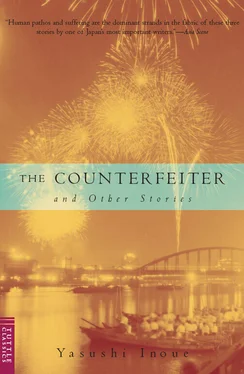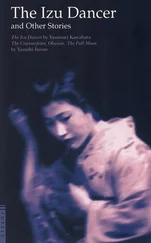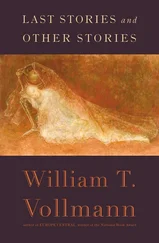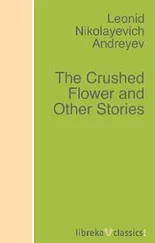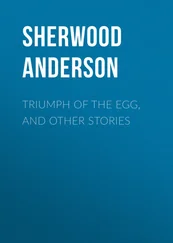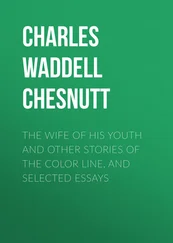Yasushi Inoue - Counterfeiter and Other Stories
Здесь есть возможность читать онлайн «Yasushi Inoue - Counterfeiter and Other Stories» весь текст электронной книги совершенно бесплатно (целиком полную версию без сокращений). В некоторых случаях можно слушать аудио, скачать через торрент в формате fb2 и присутствует краткое содержание. Год выпуска: 2000, Издательство: Tuttle Publishing, Жанр: Классическая проза, на английском языке. Описание произведения, (предисловие) а так же отзывы посетителей доступны на портале библиотеки ЛибКат.
- Название:Counterfeiter and Other Stories
- Автор:
- Издательство:Tuttle Publishing
- Жанр:
- Год:2000
- ISBN:нет данных
- Рейтинг книги:5 / 5. Голосов: 1
-
Избранное:Добавить в избранное
- Отзывы:
-
Ваша оценка:
- 100
- 1
- 2
- 3
- 4
- 5
Counterfeiter and Other Stories: краткое содержание, описание и аннотация
Предлагаем к чтению аннотацию, описание, краткое содержание или предисловие (зависит от того, что написал сам автор книги «Counterfeiter and Other Stories»). Если вы не нашли необходимую информацию о книге — напишите в комментариях, мы постараемся отыскать её.
Counterfeiter and Other Stories — читать онлайн бесплатно полную книгу (весь текст) целиком
Ниже представлен текст книги, разбитый по страницам. Система сохранения места последней прочитанной страницы, позволяет с удобством читать онлайн бесплатно книгу «Counterfeiter and Other Stories», без необходимости каждый раз заново искать на чём Вы остановились. Поставьте закладку, и сможете в любой момент перейти на страницу, на которой закончили чтение.
Интервал:
Закладка:
For all of these reasons, I was unable to proceed with any expedition even as far as a draft of the chronology, which I consider basic to any biography. After visiting town after town on the Inland Sea coast near his birthplace, where his earliest work was done, and after going to see the small cottage-industry villages of Hokuriku, where, curiously, Keigaku enthusiasts were concentrated and had assembled those masterpieces of his later years that he had produced for sale, I was scarcely able to fill two or three notebooks with notes. Then, as the war increased in intensity, I had to drop my work on the biography while I was still in the midst of the basic research.
After the war, this backbreaking but delicate and tantalizing job again stared me in the face. Whenever I began to feel that I really had to get started on what I had committed myself to, the mere knowledge of the peculiar delicacy of this job kept me from feeling that I would now be able to apply myself to the task with ease. Besides — and this was a matter of some fundamental importance to me personally — I unexpectedly quit the newspaper after the war, went up to Tokyo, and turned my attention to literature. Completely immersed in this new kind of work, and with the chronology incomplete and full of gaps, I kept procrastinating, with the inevitable result that my work on Keigaku's biography simply remained in the form of those two or three tablets of notes.
That's the way things went. Even so, when it turned out that the biography wouldn't even be ready by the thirteenth anniversary, and considering the fact that I had delayed so long after having undertaken the job, I couldn't face the Onuki family. With the announcement of this memorial service staring at me, I resolved that this year I would really have to do something. I would try to assemble my work on the biography and put it into some presentable even if unpolished form and finally get this thing off my back.
So, because my own work efficiency is habitually not very great in the heat of July and August anyhow, I determined that I would spend these two summer months working on the compilation of the Keigaku biography. To that end, I took as a working place a small retreat in a mountain village at the foot of Mount Amagi in my native Izu Peninsula. There I decided to devote every morning to this job, and if I ran across some obscure points or situations, I would go to Kyoto in the fall to clear them up. At any rate, I proposed to complete a tentative draft and by some manner or means get the job done.
I must say that work progressed rather smoothly during July. By scanning almost ten volumes of his essays and travel accounts, I was able to complete my notes on his travels and the principal works he produced at each of these locales and when he did them. Thus, I was able to finish the draft chronology, albeit only in rough outline. As a result, upon entering the month of August, I was ready to adopt a writing approach by which I could pull together those facts and data that could be confirmed and discard everything that appeared conjectural. Referring to my old notes, I completed the writing of the sections of the biography: from his infancy to his youth; how he studied successively in Kyoto under Isso Katakura, Gaho Yoshimizu, and others; how he received honorable mention for presenting his debut-work, "Lost Happiness," at the 1897 Artists' Exhibition; how, availing himself of this opportunity, he had started to build his reputation as an incomparably brilliant artistic genius; and how he successively presented the works that have been praised as the masterpieces of his early period, "White Night," "The Old Fox," "Light Snow," etc. But here, my pen suddenly came to a dead halt. In narrating the period when the young Keigaku was blossoming forth as a colorful artist, I had been interspersing here and there the unedited contents of an unpublished contemporary diary, something in his own handwriting which could be considered unique Keigaku memorabilia. That diary had been turned over to me when I first visited the Onuki family after the war. It had been discovered together with various and sundry scraps in a Chinese bag which was in the Onuki family's godown when they were evacuating during the war. It was given to me by Takuhiko, who had said, "We've found something rather rare. I wonder if you don't need it for reference." On Japanese paper, in small characters, daily events from the end of 1897 to the summer of 1899 had been chronicled in fragmentary handwritten personal memoranda. For understanding Keigaku at that time, this was material that could be termed unique, unequaled and priceless.
What interested me most keenly in this diary was the discovery that this proud and arrogant genius of a painter, who was believed to have been without a single friend throughout his life, actually did have a friend called Shinozaki during this period. The name of this Shinozaki appears in three places, but Shinozaki is the only person except for members of the family who appears in this diary.
"With the silver trophy in hand, visit Shinozaki at Kitano; drink sake and chat with him till the wee hours" is one passage.
There is evidence, practically substantiated in earlier and later texts, that this refers to the time when he carried off the Special Award at the Kyoto Artists' Association Exhibition for painting "The Peacock." It would seem that in all likelihood he had taken the silver trophy with him and had gone to spend the night drinking and rejoicing with an intimate friend. Now, it is not difficult to imagine that this night was young Keigaku's most triumphant hour, and when you think about the fact that he was without restraint sharing that moment of glory with someone, you must look upon this Shinozaki person as someone who was decidedly intimate with Keigaku.
Next, there was:
"Am presented with a sea-bream by Shinozaki in the way of congratulations. Immediately go to visit Shinozaki at Shimotachiuri,* but he is out. Leave something in large characters on the door and return home."
This, too, can in all probability be interpreted as meaning that after having captured the prize at some sort of exhibition and on being given a sea-bream as a congratulatory gift by this Shinozaki fellow, he had been touched by this token of friendship and had gone to call on Shinozaki at his home or boarding-house. The expression "Leave something in large characters at the door and return home" does not clearly specify what was written. But, it would seem that either in order to explain the purpose of his visit or to express his thanks, he had, as he did so often in later years, written a Chinese poem or some impromptu verse because he had been presented with something as a congratulatory gift. It may possibly seem an extremely rash thing for me to say, but that action left a deep impression on me as being one of the most truly graphic descriptions of the artistic genius Keigaku in his youth. The date is not recorded.
Finally, the one other passage in which Shinozaki's name appears is, "Shinozaki left Shoyama this morning and came to Kyoto." This passage is in the last section of the diary and is dated August 3, Summer 1899. This statement standing by itself can only be interpolated. This one line cannot be regarded as related to anything before or after or as having any special significance. However, at that moment when I first saw the place-name Shoyama, the very fact that a certain Shinozaki appeared to have been Keigaku's most intimate friend suddenly caused an image of the counterfeiter Hosen Hara to flash across my mind.
I had a certain amount of knowledge of this man Hosen Hara, who had spent his gloomy and miserable life painting forgeries of Keigaku's works. But when I realized that this person, who had remained dormant in my mind until that instant, was identifiable with this Shinozaki and that he could be considered Keigaku's only intimate friend during his youth, I was struck with an indescribably weird feeling.
Читать дальшеИнтервал:
Закладка:
Похожие книги на «Counterfeiter and Other Stories»
Представляем Вашему вниманию похожие книги на «Counterfeiter and Other Stories» списком для выбора. Мы отобрали схожую по названию и смыслу литературу в надежде предоставить читателям больше вариантов отыскать новые, интересные, ещё непрочитанные произведения.
Обсуждение, отзывы о книге «Counterfeiter and Other Stories» и просто собственные мнения читателей. Оставьте ваши комментарии, напишите, что Вы думаете о произведении, его смысле или главных героях. Укажите что конкретно понравилось, а что нет, и почему Вы так считаете.
